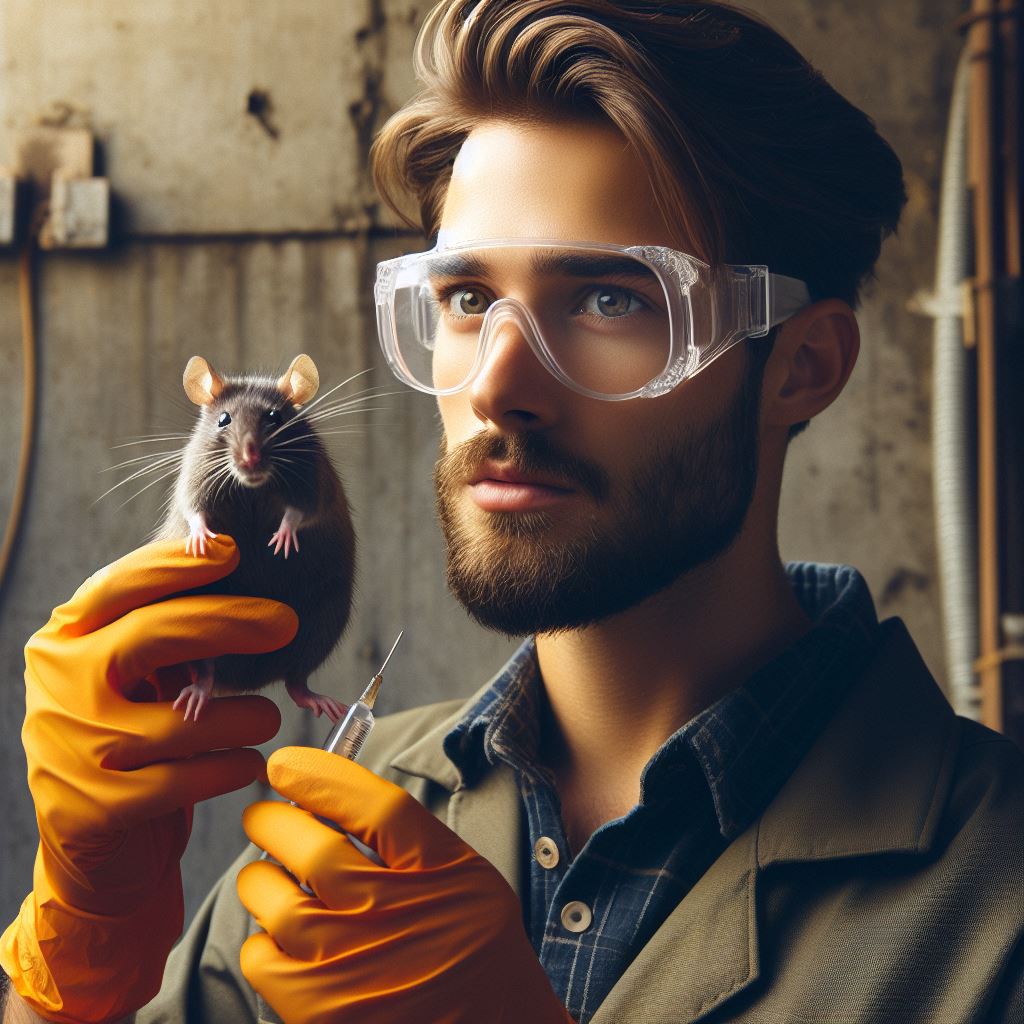Introduction
Pest control is essential for Australia’s ecosystem health, with environmental managers at the forefront of this effort. Enviro Manager Pest Control
They implement a range of strategies, including preventive measures such as biosecurity protocols and educational campaigns to raise awareness about invasive species.
Additionally, targeted control tactics like pesticide applications and biological controls are employed to manage pest populations effectively.
Ongoing monitoring and surveillance play a crucial role in assessing the effectiveness of these measures and tracking changes in pest populations over time.
This data-driven approach allows environmental managers to adapt strategies as needed and allocate resources efficiently.
Their multifaceted approach aims to mitigate the impact of pests while preserving ecological balance and protecting native flora and fauna.
Through their expertise and collaboration with stakeholders, environmental managers strive to safeguard Australia’s unique biodiversity and ensure long-term environmental sustainability.
By implementing proactive measures and innovative tactics, they work towards maintaining the delicate balance of the environment and protecting it from invasive species threats.
Environmental Manager’s role in pest control
Definition and responsibilities of an environmental manager
An environmental manager is an individual responsible for overseeing and implementing pest control strategies in a given area.
They are trained professionals knowledgeable about environmental regulations and sustainable practices.
Importance of their role in implementing pest control strategies
The role of environmental managers in implementing pest control strategies is crucial for several reasons.
Firstly, they ensure compliance with environmental regulations and laws related to pest control.
By following these rules, they help protect the ecosystem and prevent harm to human health.
Secondly, environmental managers play a vital role in promoting sustainable pest control methods.
They advocate for the use of eco-friendly and non-toxic pesticides, which minimize the negative impact on the environment.
Such strategies aim to maintain a balance between pest management and preserving natural resources.
Moreover, their involvement guarantees the proper implementation of integrated pest management techniques.
Environmental managers oversee the coordination of different pest control methods, such as physical, biological, and chemical controls.
This comprehensive approach reduces reliance on harmful chemicals and ensures long-term pest prevention.
Collaboration with different stakeholders in pest control efforts
Environmental managers understand the significance of collaboration with various stakeholders to achieve effective pest control.
These stakeholders include government agencies, local communities, businesses, and experts in the field.
Collaborating with government agencies is essential for aligning pest control strategies with existing regulations.
Environmental managers work closely with these agencies to ensure compliance and incorporate any changes in policies or regulations.
They also engage with local communities to raise awareness about pest control issues and foster sustainable practices.
By educating individuals and empowering communities, environmental managers build a foundation for long-term pest control success.
In addition, working with businesses is vital for implementing pest control strategies in commercial and industrial settings.
Environmental managers provide guidance on the use of eco-friendly products, pest prevention measures, and waste management practices.
Lastly, environmental managers seek support and expertise from other professionals in the field of pest control.
They collaborate with entomologists, biologists, and other scientists to stay updated on the latest research and advancements in pest control methods.
This collaboration ensures that the strategies implemented are based on scientific evidence and best practices.
Therefore, environmental managers play a crucial role in pest control efforts.
Their responsibilities include implementing sustainable pest control strategies, ensuring compliance with regulations, and collaborating with various stakeholders.
By actively engaging in these roles, they contribute to the preservation of the environment and the well-being of communities.
Read: Future of Agri-Environmental Management in AU
Integrated Pest Management (IPM) approach
Explanation of IPM as an effective and environmentally friendly strategy
Integrated Pest Management (IPM) is an approach that aims to control pests effectively while minimizing harm to the environment.
It is a comprehensive strategy that combines various pest control methods to achieve long-term management.
Components of IPM – prevention, monitoring, and control
The key components of IPM include prevention, monitoring, and control.
Prevention focuses on identifying and addressing the underlying causes of pest problems to prevent infestations from occurring in the first place.
Monitoring involves regular inspections to detect and identify pests early on.
This enables the environmental manager to determine the extent of the infestation and decide on appropriate control measures.
Control methods employed in IPM are based on the principles of ecological balance and minimal disruption to the environment.
They can include biological controls, such as introducing natural predators or using pheromones, as well as mechanical controls like traps or physical barriers.
The role of the environmental manager in implementing IPM
The environmental manager plays a crucial role in implementing IPM within an organization.
They are responsible for developing and implementing pest management plans based on IPM principles, as well as coordinating with relevant stakeholders.
First, the environmental manager conducts a thorough assessment of the pest situation, identifying the specific types of pests and the factors contributing to their presence.
This information informs the development of a targeted IPM plan.
Next, the environmental manager educates and trains staff on IPM principles and practices, emphasizing the importance of prevention and early detection.
They promote a proactive approach to pest management, encouraging employees to report any signs of pest activity.
The environmental manager also oversees the implementation of control measures, ensuring that they are effective and in line with IPM principles.
They regularly monitor and assess the results, making adjustments as necessary to achieve optimal pest management outcomes.
Furthermore, the environmental manager keeps track of pest-related data, documenting the effectiveness of IPM strategies and identifying areas for improvement.
This information can be used to refine future pest management plans.
Generally, Integrated Pest Management (IPM) is an effective and environmentally friendly strategy for pest control.
By combining prevention, monitoring, and control, IPM minimizes harm to the environment while effectively managing pests.
The role of the environmental manager is vital in implementing IPM within an organization, from assessing the pest situation to educating staff and overseeing control measures.
Read: Biodiversity: Enviro Manager’s Role in AU
Pest identification and risk assessment
Process of identifying pests and assessing their impact on the environment
- Pest identification is a crucial step in pest control as it helps determine the appropriate management strategies.
- The process involves observing and documenting pest species, their behavior, and the damage they cause.
- It is important to understand the life cycle and habitat of pests to effectively control and prevent their spread.
- Assessing the impact of pests on the environment involves evaluating their potential harm to ecosystems and biodiversity.
- Environmental managers analyze how pests may disrupt natural processes and threaten native plant and animal species.
- By understanding the impact of pests, appropriate measures can be taken to minimize their negative effects on the environment.
Tools and techniques used in pest identification and risk assessment
- Environmental managers use various tools to identify pests, such as binoculars, field guides, and traps.
- Visual inspection and monitoring are commonly used techniques to identify pests and understand their behavior.
- Genetic techniques, like DNA analysis, can help identify invasive species and track their spread.
- Remote sensing technology, such as satellite imagery, aids in identifying pest infestations over large areas.
- Risk assessment tools, such as ecological impact assessments, help evaluate the potential harm caused by pests.
- Computer modeling and simulations allow environmental managers to predict the spread and impact of pests.
The role of the environmental manager in conducting pest identification and risk assessment
- Environmental managers play a crucial role in identifying pests and assessing their impact on the environment.
- They have expertise in pest biology, behavior, and ecology, enabling them to accurately identify and assess pests.
- Environmental managers collaborate with experts from different fields, such as entomologists and ecologists, to gather knowledge and expertise.
- They conduct surveys and field research to observe and document pest populations, their behavior, and the damage they cause.
- Risk assessment is an integral part of an environmental manager’s role, as they evaluate the potential harm caused by pests.
- Based on the assessment, environmental managers develop comprehensive pest control strategies that consider both the environment and human health.
Lastly, pest identification and risk assessment form the foundation for effective pest control strategies.
Environmental managers utilize various tools, techniques, and their expertise to identify pests, assess their impact, and develop appropriate management plans.
By understanding pests’ behavior and potential harm to the environment, appropriate measures can be implemented to protect ecosystems and biodiversity.
Read: Soil Health: Top Priority for AU Enviro Experts

Environmentally friendly pest control methods
Environmentally friendly pest control methods are crucial in minimizing environmental harm while effectively managing pests.
Environmental managers employ various strategies to achieve this goal.
This chapter will delve into the different methods used, including biological, chemical, and physical control.
Overview of various methods used by environmental managers
Environmental managers employ a range of pest control methods to mitigate the impact on the environment.
These methods are carefully chosen based on the specific pest problem at hand and the desired outcome.
Biological control methods – introduction of natural enemies
Biological control involves introducing natural enemies, such as predators, parasites, or pathogens, to control pest populations.
These natural enemies feed on the pests, reducing their numbers and preventing further damage.
Chemical control methods – responsible and targeted use
Chemical control methods involve the use of pesticides or insecticides to eliminate pests.
However, environmental managers prioritize responsible and targeted use, selecting products with low toxicity and minimal environmental impact.
Your Personalized Career Strategy
Unlock your potential with tailored career consulting. Get clear, actionable steps designed for your success. Start now!
Get StartedPhysical control methods – mechanical trapping or blocking techniques
Physical control methods rely on mechanical trapping or blocking techniques to manage pests.
This includes using barriers, traps, or physical removal methods to prevent pests from entering or infesting a specific area.
The role of the environmental manager in choosing the appropriate method
Environmental managers play a pivotal role in choosing the most appropriate pest control method.
They consider factors like the severity of infestation, potential environmental impact, and long-term effectiveness to make an informed decision.
By carefully assessing the situation, an environmental manager can determine whether biological control, chemical control, or physical control would be the most effective and environmentally friendly method to employ.
For instance, in cases where pest populations are high, and the potential for environmental damage is low, biological control methods may be the preferred option.
This approach reduces reliance on chemicals and promotes natural ecosystem balance.
However, in situations where immediate results are necessary, and the potential for significant economic damage is high, chemical control methods may be necessary.
In these cases, environmental managers ensure the careful use of pesticides with minimal impact on non-target organisms and the environment.
In some instances, physical control methods may be the most suitable option.
This is particularly true for pests that have limited options for chemical control or in situations where the use of chemicals may not be feasible or effective.
Overall, the environmental manager’s role is dynamic and multifaceted, requiring careful consideration of the specific pest issue at hand and the environmental implications of the chosen control method.
Review, environmentally friendly pest control methods are essential for effective pest management while minimizing harm to the environment.
Biological, chemical, and physical control methods each have their place, and the role of the environmental manager is crucial in choosing the most appropriate strategy for each situation.
By prioritizing the environment and considering long-term sustainability, environmental managers ensure a balanced and responsible approach to pest control.
Read: Renewable Energy in AU Farms: Enviro Impact
Monitoring and evaluation
Importance of ongoing monitoring to assess pest control effectiveness
Ongoing monitoring plays a crucial role in determining the effectiveness of pest control measures.
It allows environmental managers to assess whether their strategies are yielding the desired results or if adjustments need to be made.
By regularly monitoring, environmental managers can identify pest species, their population levels, and the extent of damage caused.
This information helps them gauge the effectiveness of current control methods and refine their strategies accordingly.
Moreover, ongoing monitoring helps in early detection of new pest infestations or outbreaks.
By promptly identifying these issues, environmental managers can prevent them from spreading and causing significant damage to ecosystems, crops, or structures.
Overall, ongoing monitoring provides critical data that enables environmental managers to make informed decisions, optimize their pest control efforts, and minimize the negative impacts of pests.
Use of technology in monitoring and data collection
Technology plays a pivotal role in enhancing the efficiency and accuracy of pest monitoring and data collection processes.
Environmental managers can leverage various technological tools and advancements to streamline their efforts.
One key technology used in pest monitoring is remote sensing.
This involves the use of satellite imagery or drones to gather data on pest infestations over large areas quickly.
By analyzing these images, environmental managers can identify patterns, assess the extent of damage, and plan targeted control strategies.
Data collection is also facilitated through computerized systems and mobile applications.
These tools allow environmental managers to record and store data on pest populations, control measures applied, and their outcomes in real-time.
Such databases enable them to track trends, evaluate the efficiency of different control methods, and compare results over time.
Furthermore, automated traps and sensors are employed to detect pest presence and monitor their activity.
These devices can capture and transmit data on population density, movement patterns, or temperature changes, providing valuable insights for effective pest control decision-making.
The integration of technology in monitoring and data collection revolutionizes the way environmental managers tackle pest control challenges, enabling them to be proactive, resourceful, and precise in their efforts.
The role of the environmental manager in monitoring and evaluating pest control efforts
The environmental manager plays a pivotal role in overseeing and evaluating pest control efforts.
They are responsible for coordinating monitoring activities, analyzing the collected data, and assessing the overall effectiveness of pest control strategies.
Firstly, environmental managers need to establish clear monitoring protocols and guidelines for their teams.
This ensures consistent data collection and analysis across different locations and time periods, facilitating accurate comparisons and trend identification.
Secondly, they interpret the collected data to assess the impact of pest control measures.
By comparing data before and after implementing specific strategies, they can determine whether the control efforts have been successful or require modifications.
Environmental managers also collaborate with experts to evaluate the ecological impact of pest control methods.
They consider the potential effects on non-target species, ecosystems, and natural processes, aiming to minimize negative consequences and promote sustainable solutions.
Based on the evaluation outcomes, environmental managers adjust pest control strategies as needed and communicate the findings to stakeholders.
This ensures transparency, fosters continuous improvement, and strengthens the effectiveness of pest control initiatives.
Overall, ongoing monitoring is of utmost importance in assessing the effectiveness of pest control strategies.
Using technology in monitoring and data collection enhances efficiency.
The role of the environmental manager is crucial in overseeing and evaluating pest control efforts, ensuring their effectiveness and sustainability.
Compliance with regulations and standards
Overview of relevant regulations and standards in Australia
The field of pest control in Australia is governed by various regulations and standards.
- The Pest Management Act provides a legislative framework for pest management activities in the country.
- The Australian Pesticides and Veterinary Medicines Authority (APVMA) regulates and approves the use of pesticides and other pest control products.
- The Environmental Protection and Biodiversity Conservation Act (EPBC Act) aims to protect and manage threatened species and ecological communities.
- Occupational Health and Safety (OHS) regulations ensure the safety and wellbeing of workers involved in pest control operations.
- State and territory governments also have their own regulations and standards that must be followed.
Importance of environmental managers in ensuring compliance
Environmental managers play a crucial role in ensuring compliance with pest control regulations and standards in Australia.
- Environmental managers have a deep understanding of the relevant laws and regulations, ensuring the company’s operations align with legal requirements.
- They develop and implement compliance programs, ensuring that pest control activities adhere to approved methods and use authorized products.
- Environmental managers liaise with regulatory bodies and keep up-to-date with any changes or updates in regulations, preventing non-compliance issues.
- They conduct regular monitoring and audits to ensure that all pest control activities are conducted in compliance with environmental regulations.
- By overseeing training and education programs, environmental managers ensure that all staff members are aware of their responsibilities and the importance of compliance.
- Environmental managers also play a crucial role in initiating corrective actions if any non-compliance issues arise, thereby minimizing potential environmental impacts.
Challenges faced by environmental managers in meeting regulatory requirements
Despite their importance, environmental managers face several challenges in meeting regulatory requirements for pest control in Australia.
- Keeping up with ever-evolving regulations and standards can be challenging, as laws and guidelines are constantly updated.
- The complexity of the regulatory framework makes it difficult to interpret and implement compliance measures effectively.
- Limited resources and budget constraints can pose challenges in implementing and maintaining compliance programs.
- The diverse nature of pest control operations, such as agricultural pest management and urban pest control, requires a tailored approach to compliance.
- Coordinating and ensuring compliance across multiple sites or branches can be logistically challenging.
- Dealing with non-compliant subcontractors or employees who do not follow established protocols can create compliance issues.
In fact, compliance with regulations and standards is essential in pest control operations in Australia.
Environmental managers play a vital role in ensuring compliance by understanding and implementing relevant regulations, developing compliance programs, and monitoring activities.
However, they also face challenges such as keeping up with changing regulations and limited resources.
Despite these challenges, environmental managers strive to minimize non-compliance issues and uphold environmental protection in pest control practices.
Conclusion
Environmental managers in Australia are pivotal in the realm of pest control, employing a plethora of strategies aimed at maintaining the health and integrity of the environment.
Their role cannot be overstated, as they stand as guardians of biodiversity and ecological balance amidst the challenges posed by invasive pests.
These dedicated professionals employ a multifaceted approach to pest control, encompassing various preventive and control measures.
Preventive strategies include implementing stringent biosecurity protocols at national borders, conducting educational campaigns to raise awareness about the risks of invasive species, and promoting responsible practices among industries and communities to minimize the introduction and spread of pests.
In addition to prevention, environmental managers execute targeted control measures to manage established pest populations effectively.
These measures may involve the strategic application of chemical pesticides, the introduction of natural predators through biological control methods, and the implementation of integrated pest management approaches that prioritize sustainability and environmental stewardship.
It is paramount for readers to recognize and support the invaluable contributions of environmental managers in pest control efforts.
By appreciating their tireless efforts and advocating for their crucial role in safeguarding the environment, we can collectively contribute to the preservation of Australia’s rich biodiversity and ecological heritage.




